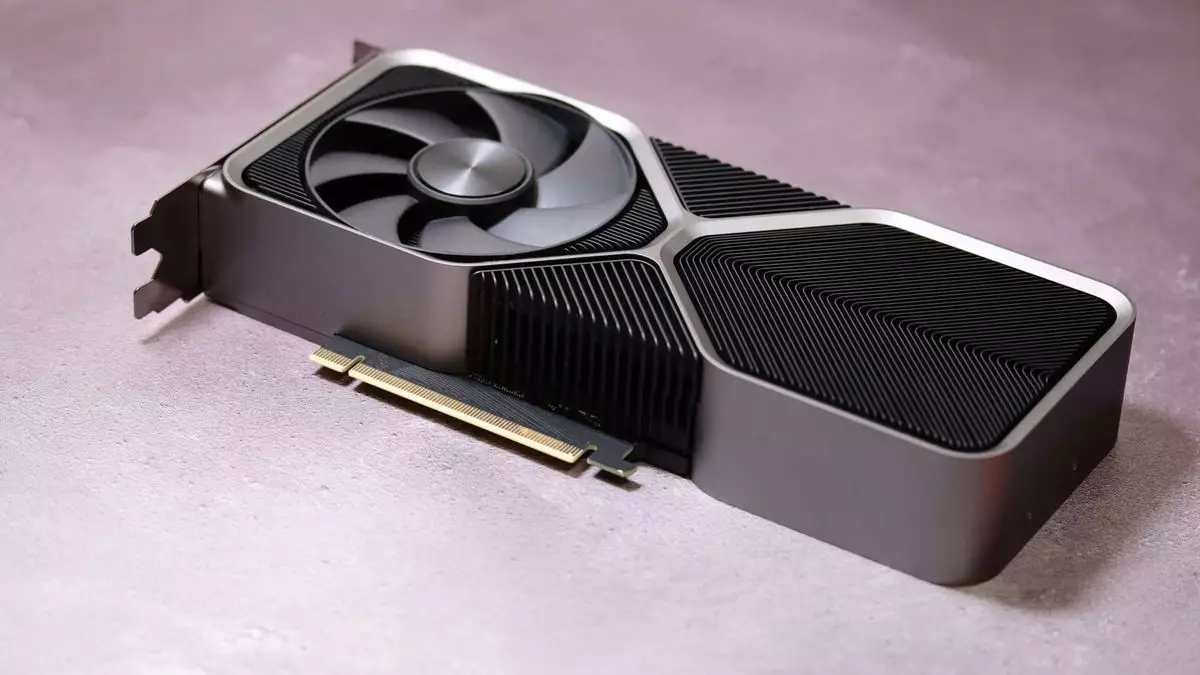The anticipation surrounding Nvidia’s next generation of graphics cards is palpable as we approach CES 2025. Recent leaks suggest that Nvidia might unveil not just its flagship models, the RTX 5080 and RTX 5090, but also the RTX 5070, marking a potential shift in their release strategy. For enthusiasts, gamers, and industry watchers alike, these rumors aren’t just idle speculation—they reflect significant trends in hardware development and market competition.
Traditionally, Nvidia has opted to showcase its high-end models first, which means that if these rumors hold true, we could be witnessing a departure from that long-standing practice. The inclusion of the RTX 5070 at CES would signal Nvidia’s intent to directly appeal to the mid-range market, a segment often overlooked during initial product launches. As the market has become increasingly competitive with AMD’s advancements, Nvidia may see the necessity to maintain interest across all tiers of its GPU offerings from the onset.
The CES event in January 2025 could serve as a strategic platform for Nvidia to not only announce its new lineup but to set the tone for the coming year in PC gaming. The visibility afforded by such a high-profile event could enhance anticipation and drive up demand for all models being launched.
Recent reports indicate that the RTX 5070 might feature 12 GB of VRAM, which is a notable increase compared to its predecessors. Alongside a 192-bit memory bus and GDDR7 memory running at an impressive 28 Gbps, it seems designed to provide significant performance upgrades, particularly in memory bandwidth. This change could reflect Nvidia’s intention to push players towards higher settings, especially in 4K gaming scenarios.
However, the ongoing debate among gamers and industry analysts revolves around the practicality of VRAM and its relevance to performance. Nvidia has previously emphasized the importance of cache memory in gaming performance rather than sheer VRAM volume. A larger L2 cache allows for quicker data retrieval, reducing reliance on VRAM. This stance might lead to speculation that while VRAM is critical, it may not be the end-all-be-all for gaming performance, particularly when software optimizations are at play.
The expected power draw of 250 W for the RTX 5070 represents a 50 W increase over the existing RTX 4070. Not only does this trend suggest that Nvidia’s next-gen cards are becoming increasingly power-hungry, but it also raises questions about hardware compatibility and requirements for gamers looking to upgrade. The more demanding power specs across models indicate that existing setups may require significant overhauls to accommodate the new graphics architecture.
Comparatively, the RTX 5090 is rumored to have a staggering peak draw of up to 600 W, which will certainly challenge power supply units and cooling solutions in current gaming rigs. As energy efficiency becomes a more significant concern for consumers, such specifications may push some users to consider long-term viability and costs associated with upgrading their entire systems.
The recent reactions to Nvidia’s VRAM offerings, particularly following the last-minute release of a 16 GB version of the RTX 4060 Ti, illuminate ongoing tensions in the GPU market. While some consumers voice concerns regarding Nvidia’s perceived VRAM inadequacies, AMD’s attempts to arm its cards with larger memory pools have yielded mixed market results. This creates a unique space for Nvidia to navigate, potentially allowing them to prioritize performance over raw VRAM numbers, while still compensating for consumer concerns through significant advancements in other metrics.
Moreover, the impending CES launch may be Nvidia’s play to preemptively counter AMD’s rumored unveiling of its next-gen RDNA 4 GPUs. Securing audience attention early in the year could reinforce Nvidia’s dominance in high-performance graphics. However, if AMD introduces competitive mid-range offerings, Nvidia may find its own mid-range cards under scrutiny.
As we move closer to the events of CES 2025, the expectation around Nvidia’s graphics card launch continues to grow. While the company’s strategy and product offerings remain somewhat speculative, what’s clear is that the gaming community’s interest is piqued. How Nvidia addresses the VRAM debate, power consumption challenges, and competitive pressures from AMD will ultimately define its 2025 performance. As consumers eagerly await concrete specifications and price points, the excitement surrounding the possibility of groundbreaking graphics technology continues to build.


Leave a Reply